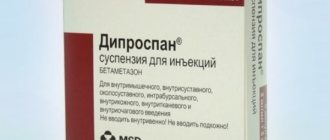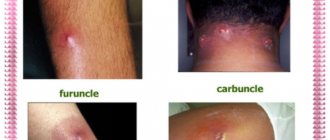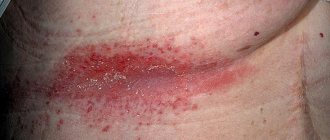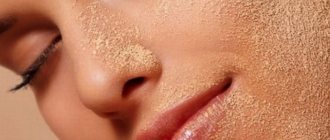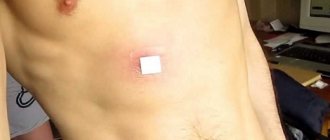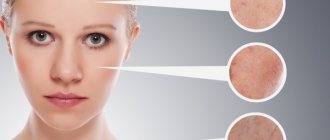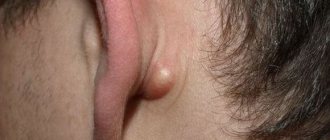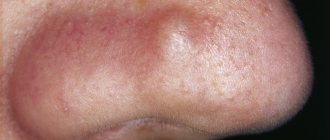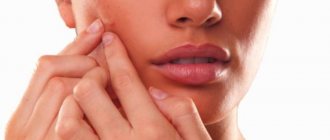Another name for a boil is a boil, which is a skin infection that occurs when a gland or hair follicle becomes infected with germs. The first sign of a boil is redness of the area of skin where the infection began. Having a boil on your buttocks can be uncomfortable and painful. It can be difficult to get rid of and risks further infection if you try to squeeze it out.
Do you think skin “diseases” are primarily an aesthetic problem?
Not really
Localization
On the buttocks
The buttocks are the most popular area for boils to appear. Bacterial infections can be identified as common causes of their occurrence in this area.
The most obvious and serious problem for a buttock boil patient is sitting on a hard surface.
Between the buttocks
Skin folds are a common source of boils. Areas of the body that have hair, sweat, and friction are more likely to become infected, and the area between the buttocks is no exception. It is not uncommon that when boils occur in this area, a person requires medical attention, since the inflammation may not heal even with home treatment. In this situation, surgery will be required. If you have this case, consult your doctor, he will be able to recommend a course of action for a quick and effective recovery.
Surgery
A boil on the buttock rarely causes complications, so to get rid of the tumor, local medications are often used. If there are appropriate indications, the boil is removed through surgery.
The operation is performed under local anesthesia. Surgical intervention involves opening the boil and removing the purulent-necrotic mass.
Upon completion of the procedure, the open wound is treated with an antiseptic solution (usually hydrogen peroxide) and covered with a bandage soaked in tretracycline, synthomycin, or other antiseptic ointment.
Causes
Boils on the buttocks can appear for various reasons. Some of the main factors causing this condition are:
- Ingrown hair . Is the most common reason. It is caused by abnormal hair growth. In such cases, the hair grows inward rather than protruding outward, and enters the same hair follicle from which it was supposed to grow. This blocks the follicle and leads to skin inflammation. As a result, a boil appears.
- Obstruction of the sweat glands . Sometimes sweat and dirt block the sweat glands, causing a boil to form. Blockage of the sweat glands causes swelling of the skin, which develops into a boil.
- Skin injury . As a result of a razor cut or other damage to the surface of the skin, the microbes trapped in it cause an infection.
- Skin bruises . Boils can also develop if there is bruising on the skin, which makes the area vulnerable to bacterial infection.
- The bacterium Staphylococcus aureus . This bacterium, which often lives on the skin or inside the nose, is most often responsible for the appearance of boils. Infection with Staphylococcus aureus means the chronic presence of this bacterium on the skin.
- Taking certain medications . Medicines that suppress the immune system increase the risk of developing boils and other infections. These include drugs based on cortisone and prednisolone, and including drugs used during chemotherapy.
Also, some people are at risk, in particular if:
- suffer from diabetes;
- have eczema;
- there are conditions that reduce the function of the immune system;
- had close contact with a person with boils;
- there is anemia from iron deficiency;
- smoke tobacco.
What does it look like?
The appearance of a boil on the butt is difficult to miss. This is a very painful pimple that significantly disrupts your overall well-being and prevents you from walking, sitting, or lying down normally. The development of boils occurs in several stages:
- At first, only a red spot forms on the skin. It may only itch and ache a little.
- Quite quickly, the active proliferation of bacteria leads to the development of obvious symptoms of the disease. The affected area becomes noticeably red, sore and itchy. The boil at this stage feels like a hard and often hot formation under the skin.
- As the boil develops and pathogenic microorganisms multiply, a purulent core forms under the skin.
Until the boil fully matures, it causes the patient a lot of discomfort, and sometimes real suffering. A large pimple can be very painful, twitch and cause general discomfort - weakness, drowsiness, lethargy, lack of appetite and even a slight increase in temperature.
Associated symptoms
The most obvious symptom of a boil is a red, painful bump on the skin. The lump may swell as it fills with pus. Pus is a collection of dead white blood cells and bacteria.
It is usually white or yellowish in color.
Symptoms may include:
- weeping or oozing lesion;
- white or yellow center of inflammation;
- swelling around the boil;
- additional boils in the surrounding area;
- fatigue;
- general painful condition;
- fever;
- swollen lymph nodes;
- itching around the boil.
Stages and mechanism of maturation
In the early stages, patients usually notice redness in the affected area. The skin becomes sensitive and causes slight pain when touched. The patient experiences some discomfort while sitting. Some people also suffer from itching in the affected area.
Pain usually occurs after one or two days. This happens as the boil fills with more and more pus and increases in size, turning into a lump. It appears more reddish in appearance.
When the boil grows to a significant size, it is ready to discharge pus. A white or yellow spot appears at the top of the boil. This means that it is ready to burst soon.
In the final stage, which occurs after a day or two, the boil bursts, releasing the pus contained inside it. Pain and discomfort go away almost immediately. Healing takes 1-2 days if treated correctly.
Can it dissolve without opening?
In the case when a compaction has already formed in the subcutaneous layer, or the boil is unable to break through the epithelium on its own and release pus, the neoplasm may eventually resolve due to the influence of immune system cells on it and the natural renewal of epidermal tissues. If the boil does not resolve and periodically becomes inflamed, then these are signs that the dermatological disease has entered the chronic stage of its course and is now unlikely to go away on its own. In such situations, it is impossible to do without prompt assistance from a surgeon.
How dangerous is this?
A single boil in itself does not pose a danger if all precautions are followed and therapy begins on time. But it is important to avoid opening or piercing the boil yourself, without special preparation, as the infection can spread to other parts of the body, and this is fraught with complications.
In some cases, people suffer from multiple boils, which can lead to swollen lymph nodes and the development of a fever.
It also happens that boils are recurrent in nature, in the case of complex conditions such as chronic furunculosis.
Overview of General Recommendations
Boils, despite the apparent simplicity of the symptoms, are a dangerous formation. Boils often cause meningitis or sepsis. Due to non-compliance with the rules, a person endangers his own health and life. Carefully following the recommendations of doctors allows you to protect a person from the development of dangerous consequences.
Hygiene
The most important part of prevention and treatment is maintaining hygiene standards and proper care. A person who takes care of his own hygiene is rarely exposed to boils. Once an abscess has formed, keeping it clean is the key to successful and effective treatment.
After the appearance of boils, a person must stock up on individual household items. This includes towels, washcloths, clothing, combs, scissors, and razors. It is better to wash your body with your own soap; the risk of spreading an infectious pathogen is high. If the formation appears on a person’s face, it is important that the cosmetics remain personal.
Diagnostics
The diagnosis is made by a doctor by observing typical symptoms, taking a medical history, and doing a physical examination. Blood tests or specialized laboratory tests are not usually needed to make a diagnosis. But if the infection within the boil has spread to deeper tissue or is widespread, cultures of pus may be taken from the wound area to identify the exact type of bacteria responsible for the infection. This is necessary to prescribe the correct antibiotics for treatment.
Prevention of furunculosis on the butt
For boils and furunculosis on the butt, you must follow the rules of prevention in order to prevent complications. They must also be followed to prevent re-infection.
- First of all, observe the rules of personal hygiene. You need to wash yourself more often.
- Improving immune defense and metabolism is the key to health. To do this, you need to eat right, take vitamin complexes, harden yourself, experience light physical activity, and give up bad habits.
- Always complete courses of antibiotic treatment to ensure that no pathological bacteria remain.
- Avoid mechanical damage to the skin, do not scratch it if you have skin diseases, and do not squeeze out pimples.
- Treat the skin with antiseptic solutions.
- Contact a specialist in a timely manner.
Treatment
There are many treatment options for boils.
Medicines
External
Anti-inflammatory, antimicrobial and healing ointments used externally:
- Levomekol . The high effectiveness of the ointment is associated with its ability to destroy bacterial protein synthesis, as a result of which pathogenic microorganisms die. It perfectly cleanses the wound of pus and relieves swelling.
- Tetracycline . The ointment has a wide spectrum of action and is effective even against staphylococcal infections.
- Oflocaine . In addition to the main action, the product effectively blocks pain and prevents the growth of bacteria.
The ointments are applied locally to a napkin and fixed with a band-aid.
Antibiotics
When an antibiotic is used, the choice depends on the type of infection that is present, as well as the results of tests to identify the exact bacteria infecting the area. Examples of medications that are prescribed to treat boils include topical clindamycin, mupirocin, and cephalexin.
Generally, antibiotic ointments and creams are not helpful in treatment because they do not penetrate the infected skin or pores.
Aids
Using anti-inflammatory and pain relievers such as ibuprofen or acetaminophen can help reduce the pain, swelling, and redness associated with boils as they heal.
Surgical intervention
In some cases, large boils that do not go away on their own require surgery. A doctor may open a boil by making a small cut or puncture. Deeply infected boils that cannot be completely drained are dressed with sterile gauze to help absorb and remove additional pus.
ethnoscience
Many boils can be treated comfortably at home using alternative remedies:
Warm compress . One of the most common and effective methods. The compress improves blood circulation, which sends more white blood cells to the area of infection, reducing pain and speeding healing.
It is very easy to make a warm compress at home, for this you must:
- Soak a clean cloth in hot water.
- After making sure the cloth is not too hot, place it on the boil and hold for 10 minutes.
- Wash the affected area of skin on the buttocks with soap and place sterile gauze over it.
- Repeat this process 3-4 times a day for faster results.
- Continue for 5 days until the boil reaches full maturity for opening.
Tea tree oil . Due to its antibacterial properties, it is an excellent home remedy for treating boils. It contains many compounds that kill skin infections and promote healing of painful lesions naturally. Additionally, the oil helps calm redness as it is anti-inflammatory in nature.
This inexpensive method requires only a cotton pad and the oil itself:
- Pour a few drops onto the disc.
- Use the product 2-3 times a day.
- Continue until the redness and infection disappears.
Apple vinegar . It has antiseptic properties that help eliminate staphylococcal infections. Antimicrobial qualities are due to the high content of acetic acid. Due to its low pH level, it also helps reduce inflammation and relieve itchy skin from boils.
Instructions for making apple cider vinegar lotion:
- Dilute apple cider vinegar with an equal amount of water. (Vinegar can irritate your skin, so always do an allergy test. If the mixture is too hot, try increasing the amount of water. Gradually, your skin should get used to the lotion.)
- Soak a cotton swab in the solution and apply it to the boil for 20 minutes to kill germs and stimulate the healing process.
- Repeat 2 times a day and use until the boil heals and disappears completely.
Turmeric . This delicious culinary spice also has the ability to kill various bacterial strains that cause skin infections. Turmeric paste helps remove infection, reduce inflammation, relieve pain and discomfort in the affected area. Its antimicrobial effect is due to the compound curcumin.
You can quickly make a medicated paste using the following method:
- Mix some turmeric powder with water to form a thick paste.
- Apply the treatment to the buttock and cover with gauze.
- Leave for 20 minutes.
- Use 2 times daily to speed up the healing process.
Aloe vera . A natural ingredient that relieves discomfort caused by boils. Aloe vera has skin healing properties, soothes irritation and reduces redness.
For aloe to be as effective as possible, it must be used with the least amount of additional ingredients:
- Apply the gel directly to the inflamed area.
- Gently massage the boil and surrounding skin area.
- Use 2-3 times a day and continue to use until all symptoms disappear completely.
Colloidal silver . Ointments based on colloidal silver effectively heal the infected area without any complications, providing an antibacterial effect.
For quick healing:
- Apply a little ointment to the inflamed area.
- Use 2 times a day until the boil disappears completely.
Folk remedies
Our ancestors, without medications and UHF procedures, knew what to do when a boil appeared on the butt. Of course, a spell for an abscess is unlikely to help, so we offer more effective alternative treatment:
- Onion. Take a medium onion, place in the oven (30 minutes), bake at 150 C. Then grate 1 part of laundry soap, mix with 2 parts of baked onion (chopped into a paste). Lubricate the boil with ointment and tie it with a bandage. Keep the compress on the boil for a day, then repeat the procedure if necessary.
- Aloe. Wash the aloe leaf thoroughly, cut off the spines, and chop until the juice releases. Soak a gauze bandage in aloe juice, tie it to the boil, and change it every 4 hours. If you carry out the procedure before the boil breaks out, the boil will go away quickly.
- Burdock. Place a fresh burdock leaf in boiling water for one minute. Cool until warm, then apply to the boil overnight, tied with a gauze bandage. Apply the compress until the problem disappears.
Complications and consequences
Complications of boils include the following:
- formation of a larger abscess;
- worsening or spread of infection to adjacent areas of skin or soft tissue;
- spread of infection through the bloodstream to other parts of the body;
- if the boil is caused by methicillin-resistant Staphylococcus aureus, then there is a risk of the infection spreading to deeper tissues;
- risk of re-infection - more likely with certain types of boils, most common with hidradenitis suppurativa, and also in situations where the cause is chronic, such as blocked sebaceous glands seen in cystic acne.
